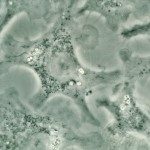Lien vers Pubmed [PMID] – 14620132
Scand. J. Infect. Dis. 2003;35(9):535-44
Sepsis is associated with an exacerbated production of both pro- and anti-inflammatory cytokines, which are detectable within the bloodstream. Their ‘half-angel, half-devil’ properties are fully illustrated in sepsis. While they are a prerequisite to fight infection, their overzealous production is deleterious. The highest levels are found in plasma of non-surviving patients: they are markers and causative agents of poor outcome. Only the level of the chemokine RANTES is inversely associated with the APACHE II score (r = -0.7; p = 0.02) and low levels are associated with poor outcome. The link, interplay and network of cytokines taking place during sepsis are illustrated by the correlations between the levels of most pro- and anti-inflammatory cytokines. Excessive release of anti-inflammatory cytokines may be associated with the immunodysregulation observed in sepsis. However, despite the presence of huge amounts of anti-inflammatory cytokines and molecules targeting specifically interleukin-1 (IL-1) (i.e. IL-1 receptor antagonist) and tumour necrosis factor (TNF) (i.e. soluble TNF receptors), there is no indication that their levels are sufficient to counteract fully these proinflammatory cytokines. TNF was initially thought to be the ‘hub of the cytokine network’. Although TNF contributes towards favouring the production of many other cytokines within a complex cascade, there are numerous examples to illustrate that its presence is not a prerequisite for these productions.

